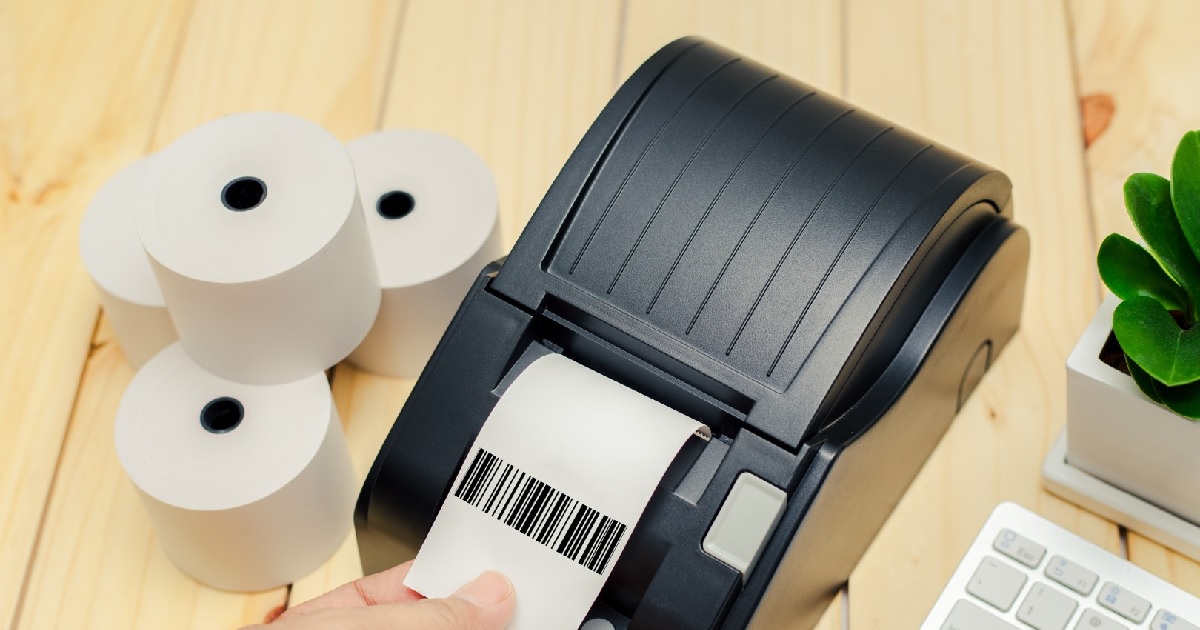Selecting the right receipt printer is an important decision for any business that deals with physical transactions. Whether you run a retail store, restaurant, or service-based business, having a reliable receipt printer helps maintain efficiency, improve customer service, and keep accurate records. However, with so many options on the market, it can be challenging to determine which one best suits your business needs.
Types of Receipt Printers:
- Thermal Printers: These printers use heat to print on special thermal paper, which eliminates the need for ink or toner. They are fast, quiet, and often more cost-effective in the long run. However, they require thermal paper, which can be sensitive to heat and light. Thermal printers are perfect for high-volume businesses, such as retail stores and restaurants.
- Impact Printers: Also known as dot matrix printers, these printers use ink ribbons and pins to imprint characters on paper. While they are slower and noisier than thermal printers, they are ideal for environments where carbon copies or multi-part forms are necessary, such as in service stations or delivery businesses.
Choosing between thermal and impact printers will depend on your business’s specific needs, transaction volume, and whether you need to print on multi-part forms.
Print Speed and Efficiency:
Print speed is a critical factor to consider, especially in busy environments where rapid transactions are essential. The faster your printer, the shorter your customer wait times will be, enhancing the overall experience. Thermal printers are generally faster than impact printers, with many models capable of printing 200 to 300 mm per second.
For businesses that handle a high volume of transactions, such as grocery stores or fast-food restaurants, investing in a high-speed printer can help reduce bottlenecks during peak hours. If your business sees fewer customers throughout the day, a slower printer might still suffice, but speed should always be a key consideration.
Connectivity Options:
The way your receipt printer connects to your Point of Sale (POS) system is another critical factor to consider. Modern receipt printers offer multiple connectivity options, including:
- USB: This is one of the most common connection types. USB connectivity offers a fast, reliable connection, making it a good choice for businesses with fixed POS systems.
- Ethernet: Ethernet-connected printers are ideal for larger businesses where printers need to be networked across multiple POS systems. They offer fast and stable connections over long distances.
- Wi-Fi: Wireless printers are perfect for businesses that require flexibility, such as pop-up shops or mobile vendors. A Wi-Fi connection allows you to place your printer wherever it’s most convenient without worrying about cables.
- Bluetooth: For mobile or tablet-based POS systems, Bluetooth connectivity can be a practical solution. It allows your printer to pair wirelessly with your device, offering flexibility and ease of use.
Paper Size and Compatibility:
Receipt printers use various paper sizes, with the most common being 80mm (3.125 inches) and 58mm (2.25 inches) widths. It’s important to choose a printer that accommodates the paper size your business requires. Larger paper sizes are typically used in high-volume businesses, as they allow for more information, such as itemized lists, while smaller paper sizes are suitable for businesses with simpler transactions.
In addition to size, consider the cost and availability of the paper. Thermal printers require special thermal paper, which may be more expensive than standard paper. On the other hand, impact printers use regular paper but require ink ribbons, which can add to the ongoing operational costs.
Budget and Long-Term Costs:
Cost is always a factor when making any business purchase. While thermal printers might have a higher upfront cost than impact printers, they generally save money in the long run by eliminating the need for ink or ribbon replacements. Impact printers, though cheaper initially, can accrue more operational costs over time due to the ongoing need for ink ribbons.
When evaluating your budget, consider not only the upfront price of the printer but also the long-term costs of maintenance, paper, and ink (if applicable). Opting for a reliable, durable receipt printer might require a larger initial investment, but it can lead to significant savings over time by reducing the need for repairs or replacements.
Additional Features to Consider:
Some modern receipt printers come with additional features that can improve their functionality and add value to your business operations:
- Auto-cutter: This feature automatically cuts the receipt after printing, saving time and providing a more professional experience for customers.
- Multi-language support: If your business serves a diverse customer base, look for a printer that supports multiple languages for receipt printing.
- Customizable receipts: Some printers allow you to add logos, promotional messages, or QR codes to your receipts, which can enhance your brand’s image and encourage repeat business.
Choosing the Right Brand:
There are several trusted brands in the receipt printer industry, each offering a variety of models tailored to different business needs. Popular brands like Epson, Star Micronics, and Bixolon are known for their quality and reliability. Researching the top brands and reading customer reviews can help you choose a printer that has a strong track record for performance and durability.
Durability and Maintenance:
When choosing a receipt printer, consider the environment in which it will be used. Restaurants and retail stores often have fast-paced, high-traffic environments, so you’ll need a printer that can handle continuous use. Thermal printers tend to have fewer moving parts, making them more durable and requiring less maintenance compared to impact printers.
Impact printers, while generally more rugged, require regular ink ribbon replacements and may need more frequent maintenance to ensure optimal performance. If your business operates in a harsh environment, such as a kitchen or outdoor space, it may be worth investing in a printer with protective features like splash resistance or dust covers.



